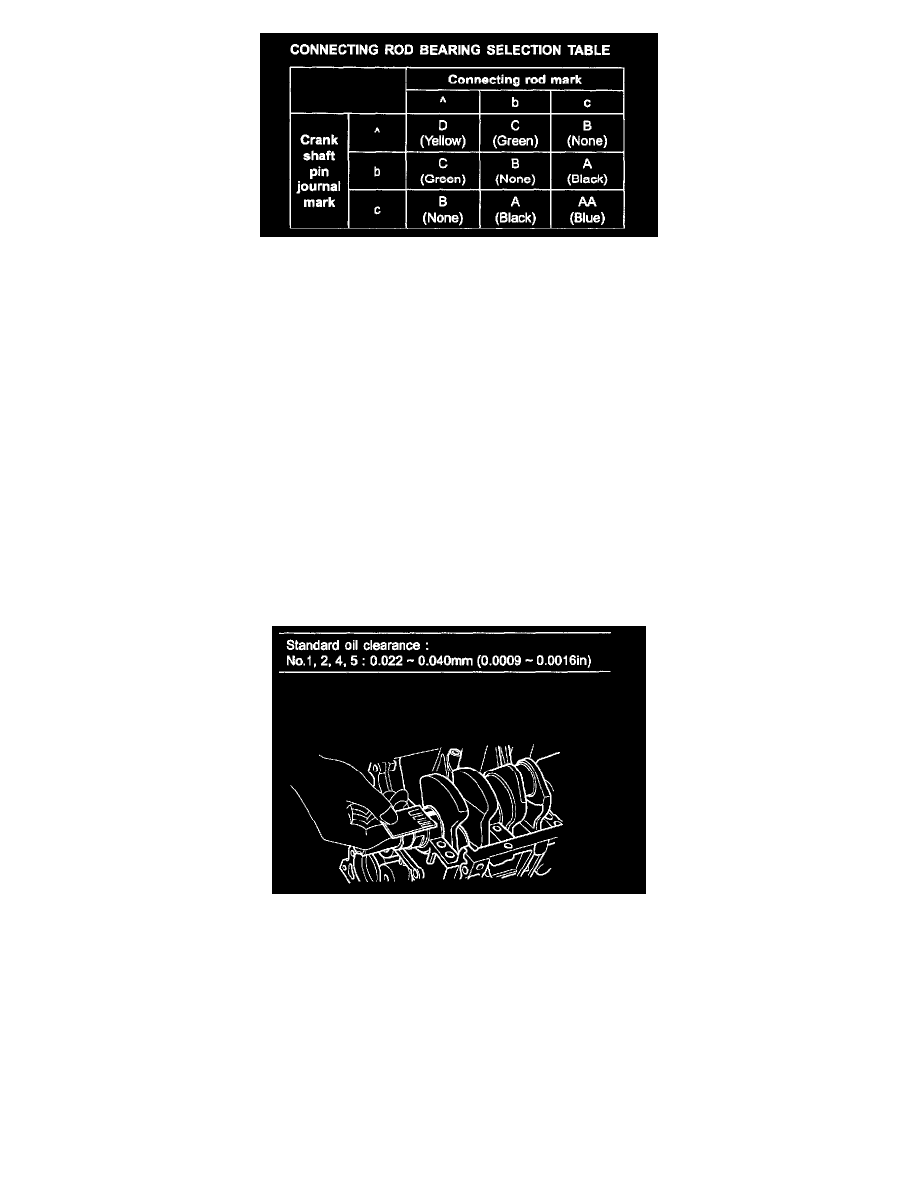Rio5 L4-1.6L (2006)

CONNECTING ROD BEARING SELECTION TABLE
3. Check the connecting rods.
1) When reinstalling, make sure that cylinder numbers put on the connecting rod and cap at disassembly match. When a new connecting rod is
installed, make sure that the notches for holding the bearing in place are on the same side.
2) Replace the connecting rod if it is damaged on the thrust faces at either end. Also if step wear or a severely rough surface of the inside
diameter of the small end is apparent, the rod must be replaced as well.
3) Using a connecting rod aligning tool, check the rod for bend and twist. If the measured value is close to the repair limit, correct the rod by a
press. Any connecting rod that has been severely bent or distorted should be replaced.
Allowable bend of connecting rod: 0.05 mm / 100 mm (0.0020 inch / 3.94 inch) or less
Allowable twist of connecting rod: 0.1 mm / 100 mm (0.0039 inch / 3.94 inch) or less
4. Check the crankshaft bearing oil clearance.
1) To check main bearing-to-journal oil clearance, remove the main bearing caps and lower bearings.
2) Clean each main journal and lower bearing with a clean shop towel.
3) Place one strip of plastigage across each main journal.
4) Reinstall the lower bearings and caps, then tighten the bolts.
Tightening torque: 53.9 - 58.8 Nm (5.5 - 6.0 kgf.m, 39.8 - 43.4 ft. lbs.)
NOTE: Do not turn the crankshaft.
5) Remove the cap and lower bearing again, and measure the widest part of the plastigage.
6) If the plastigage measures too wide or too narrow, remove the upper and lower bearing and then install a new bearings with the same color
mark.
Recheck the oil clearance.
CAUTION: Do not file, shim, or scrape the bearings or the cap to adjust clearance.
7) If the plastigage shows the clearance is still incorrect, try the next larger or smaller bearing.
Recheck the oil clearance.
NOTE: If the proper clearance cannot be obtained by using the appropriate larger or smaller bearings, replace the crankshaft and start over.
CAUTION: If the marks are indecipherable because of an accumulation of dirt and dust, do not scrub them with a wire brush or scraper.
Clean them only with solvent or detergent.
